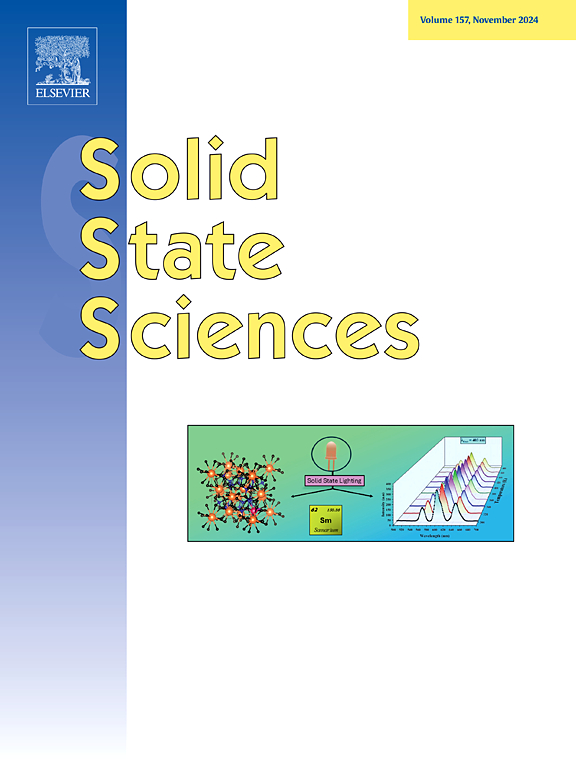Improved catalytic performance of (Fe, Cr)-ZnO/g-C3N4 nanocomposite towards electrocatalytic water splitting for clean energy
IF 3.4
3区 化学
Q2 CHEMISTRY, INORGANIC & NUCLEAR
引用次数: 0
Abstract
The declining quantity of nonrenewable energy sources and rising in temperatures globally pose serious concerns. Therefore, electrochemical water splitting emerges as a highly efficient and cost-effective method of preparing hydrogen and oxygen, utilizing materials such as metals and their oxides. Beyond precious metals, carbon-based materials have been realized to be efficient in facilitating these reactions. To improve efficiency and optimize potential applications, it has also been established that incorporating metal oxides into the layers of the graphite can significantly improve the activity of HER and OER. In this study, we introduce a newly designed composite electrocatalyst, (Fe, Cr)-ZnO/g-C3N4 ((Fe, Cr)-GZN), which demonstrates enhanced electrocatalytic performance. The composite material was synthesized through the coprecipitation of (Fe, Cr)-ZnO with g-C3N4. The electrocatalyst's structure was fully analyzed using the important characterization techniques. FTO glass was employed to electrodeposit catalysts to facilitate water splitting investigations. The (Fe, Cr)-GZN composite demonstrated excellent electrochemical water splitting performance, with low overpotentials of 304 mV and a Tafel slope of 89 mV dec−1 for OER, resulting in 10 mA cm−2 (current density). This performance outperforms Cr-GZN and Fe-GZN composites, demonstrating the (Fe, Cr)-GZN composite's potential as an extremely efficient electrocatalyst for water splitting.

求助全文
约1分钟内获得全文
求助全文
来源期刊

Solid State Sciences
化学-无机化学与核化学
CiteScore
6.60
自引率
2.90%
发文量
214
审稿时长
27 days
期刊介绍:
Solid State Sciences is the journal for researchers from the broad solid state chemistry and physics community. It publishes key articles on all aspects of solid state synthesis, structure-property relationships, theory and functionalities, in relation with experiments.
Key topics for stand-alone papers and special issues:
-Novel ways of synthesis, inorganic functional materials, including porous and glassy materials, hybrid organic-inorganic compounds and nanomaterials
-Physical properties, emphasizing but not limited to the electrical, magnetical and optical features
-Materials related to information technology and energy and environmental sciences.
The journal publishes feature articles from experts in the field upon invitation.
Solid State Sciences - your gateway to energy-related materials.
 求助内容:
求助内容: 应助结果提醒方式:
应助结果提醒方式:


